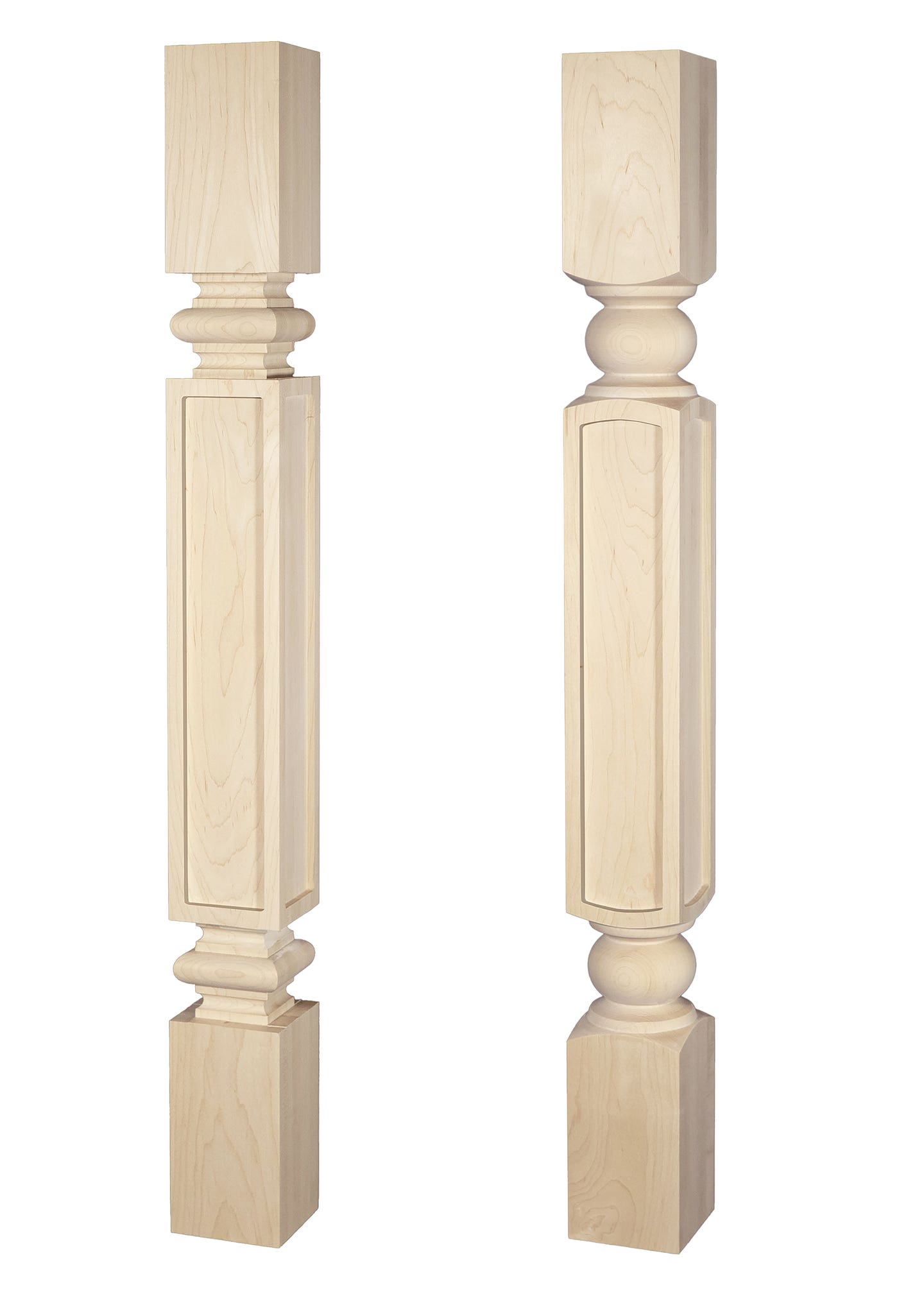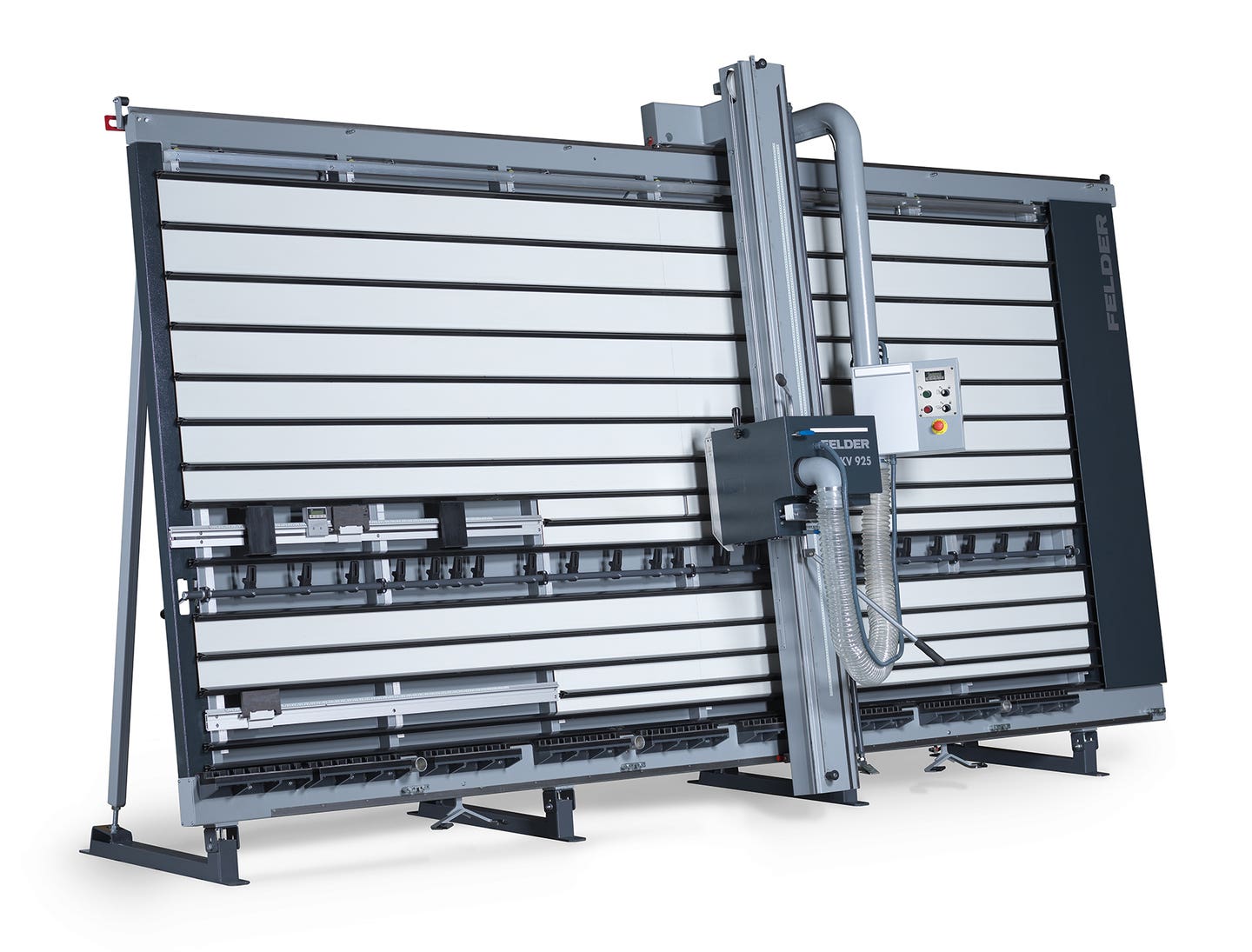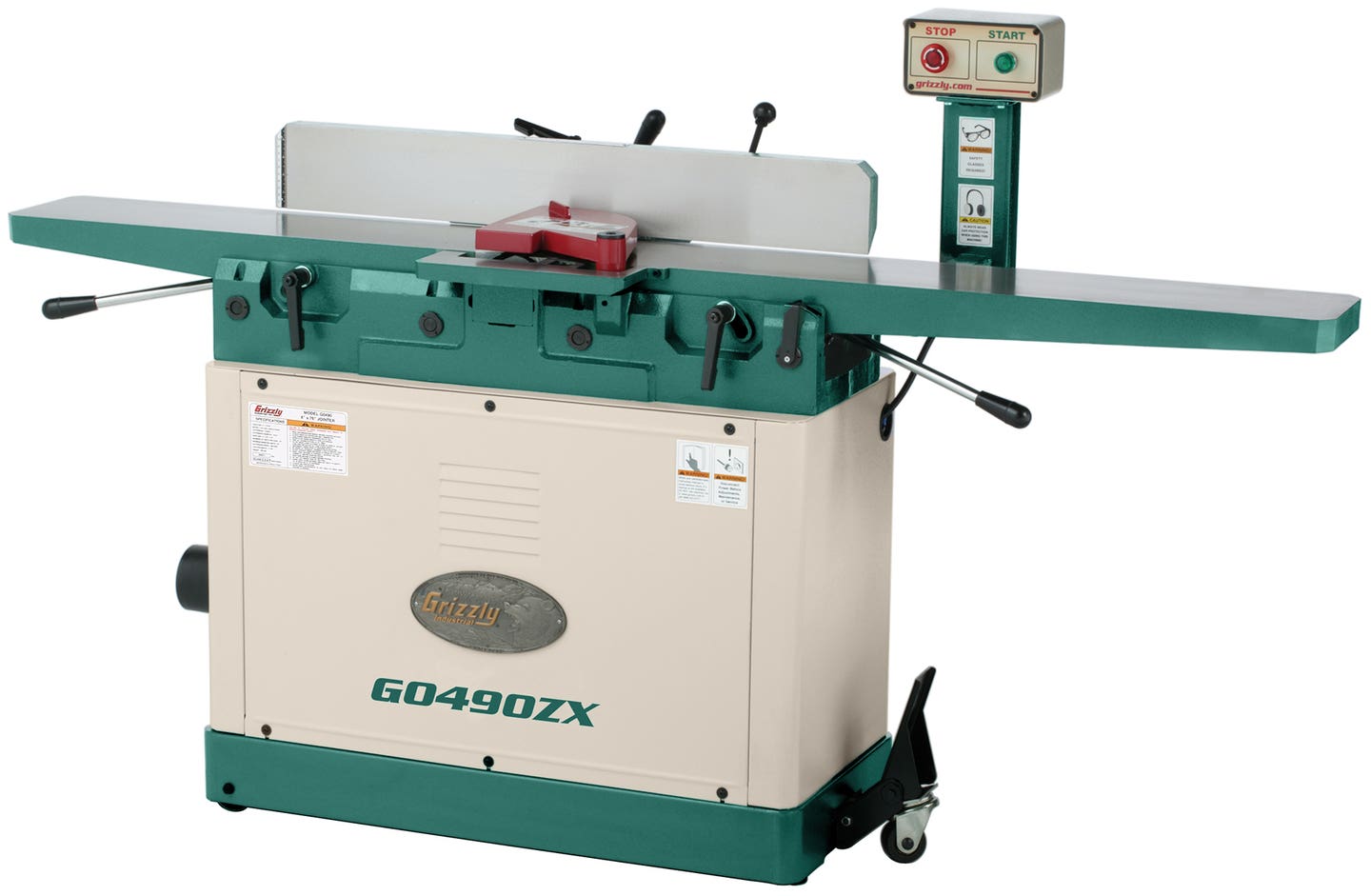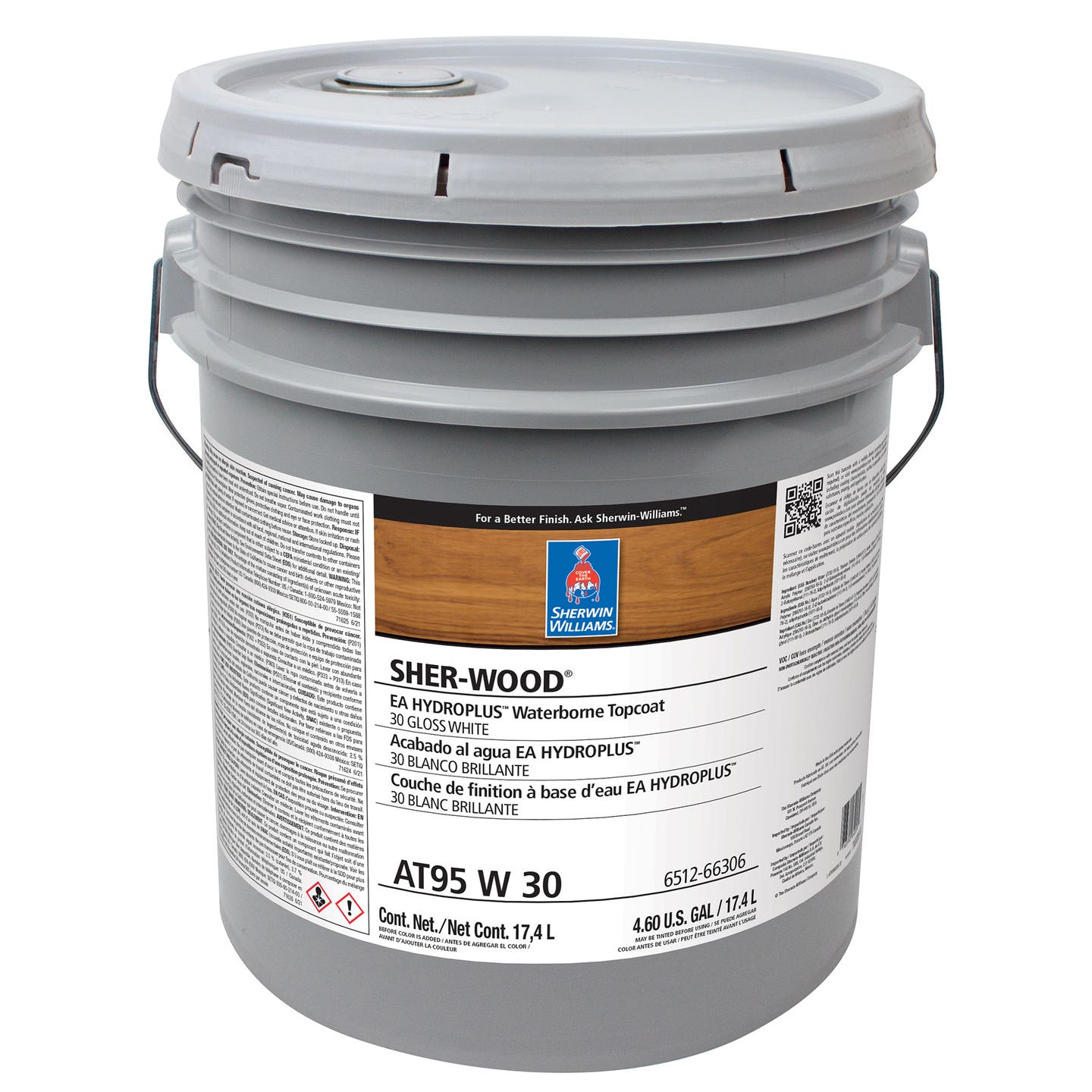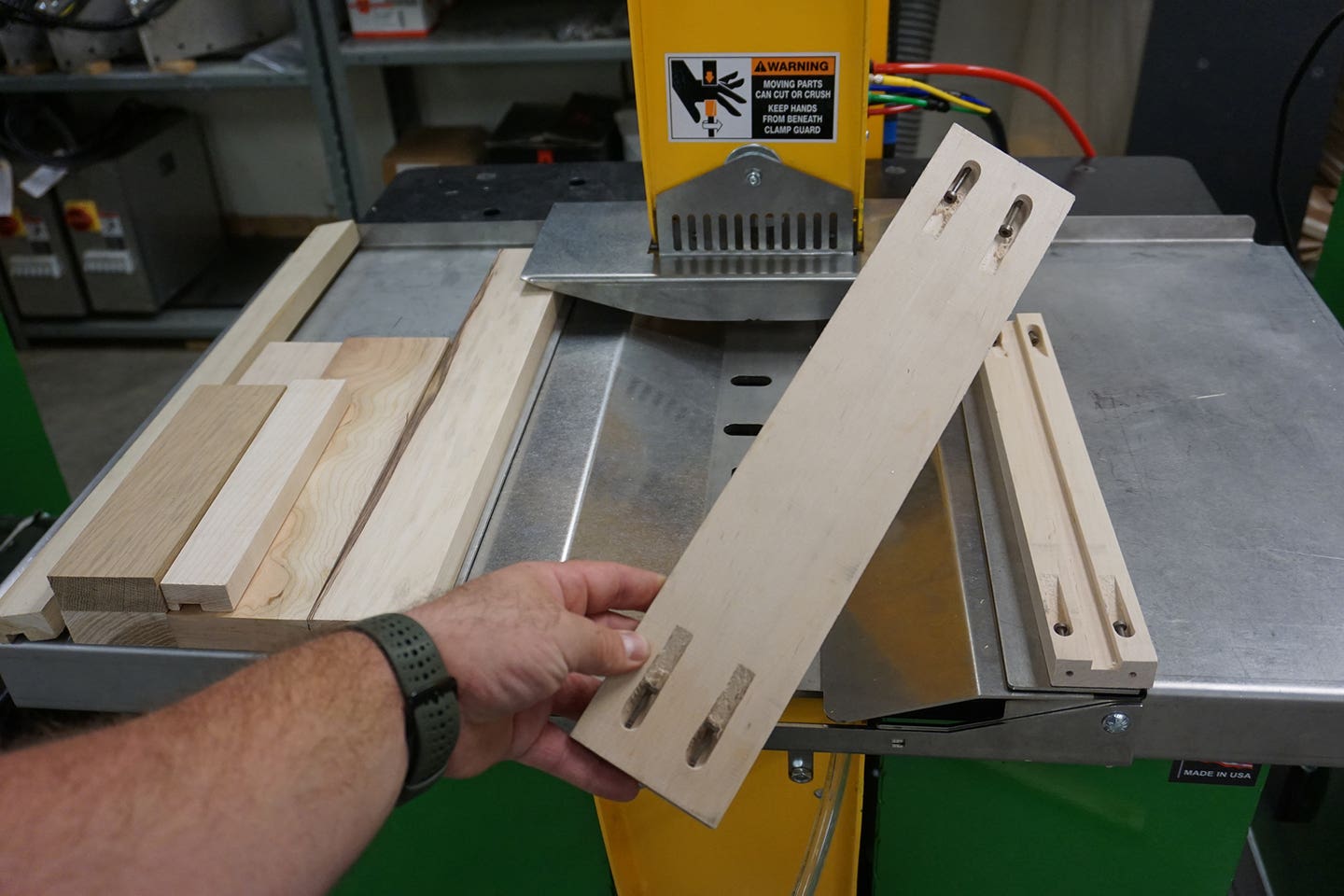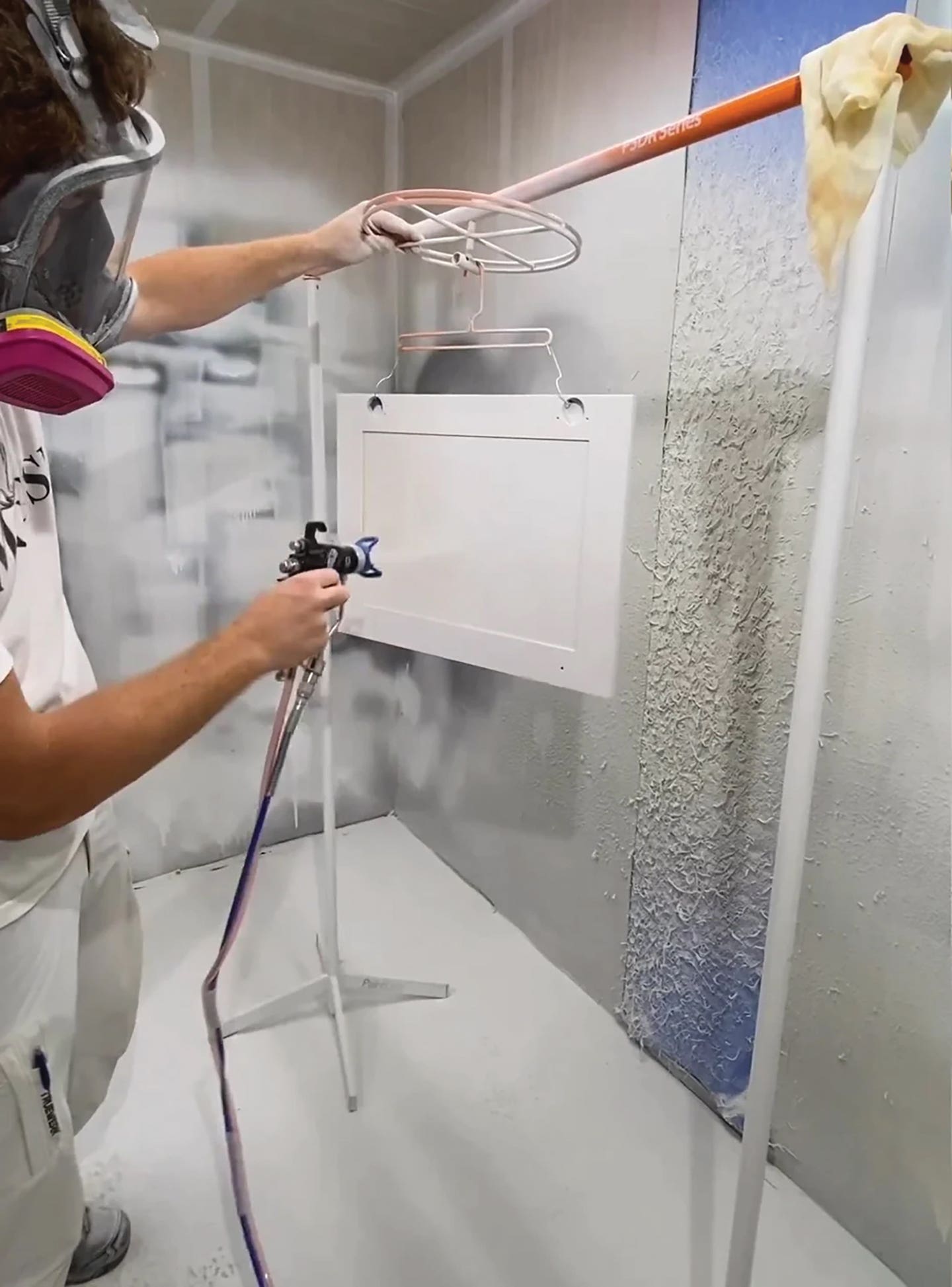Sanding doesnt have to be such drudgery
Nobody likes to sand.” That’s according to Jay Andrews, the sales manager at Laguna Tools, who begins a demonstration of the company’s sanding equipment in an online video with that…
Nobody likes to sand.”
That’s according to Jay Andrews, the sales manager at Laguna Tools, who begins a demonstration of the company’s sanding equipment in an online video with that observation. He’s not wrong. It’s a tedious, dusty and time-consuming part of the building process and one that most shops delegate to the new guy.
Wide belt sanders
Mention sanding equipment to cabinetmakers or furniture builders and their first thought is probably going to be about wide belt sanders. There’s something magical about feeding a door fresh out of clamps into one side of a machine and collecting a smooth, ready-to-finish product around the back. For most woodshops, these machines are a basic necessity. They come in a variety of widths: for example, Andrews’ employer now offers four models — 25”, 37”, 43” and 51”. They’re serious machines that produce a lot of horsepower and they can be serious investments, too. Prices range from $7,999 to $36,500. But when one considers how much labor they save during the course of a year, the numbers become a lot more palatable. Other manufacturers of machines that are appropriately sized for custom woodshops include Powermatic, SuperMax Tools and Safety Speed Cut.
One of the things to check on when shopping for a wide belt sander is how easily the rubber feed belt (sometimes called the carpet) can be replaced. Many machines require a forklift to pick up the entire table and remove it before this complicated procedure can be completed. The option here is leaving the table in place and having a feed belt that is “stitched” or “zippered”: it can be unstitched so that it’s no longer continuous.
While most wide sanders have a pneumatic control that oscillates the sanding belt (moves it side-to-side as it runs), some
don’t. If the belt only has one track, any blemish such as resin buildup or a large granule can leave a track in the wood. Oscillating belts tend to last longer and deliver a smoother finish.
Variable speed is pretty much essential if the work and the grit are to be matched up properly. Ask the salesperson if there’s a needle gauge that shows the amount of amperage the main motor is drawing. This tells the operator whether he or she is overloading the machine. That can happen if one tries to remove too much material from a panel in one pass, especially if the belt grit isn’t coarse enough, or the feed is too fast.
For the most part, thickness gauges are fairly accurate. Manual ones occasionally need to be adjusted and electronic ones can require calibrating. The challenge here might be more about training people on the floor to pay attention to both the thickness and amperage gauges. That’s especially true when the thickness can be programmed: taking too big a bite could be catastrophic.
There’s a lot of pressure involved in keeping a belt tight and, if the internal components of a wide sander are cast iron rather than sheet steel, they can probably handle it better. Some machines use a third roller to gain proper tension: this is usually located about halfway between the top and bottom ones and it moves back and forth in response to an electronic or manual control, applying varying levels of tension to the back of the belt. Ask about the quality and density of the rollers and how easy it is to replace them. This can be tricky in some two-belt systems where space is a bit limited.
Emergency shutoffs aren’t just a safety issue. They can also save an expensive part, assembly or panel. While virtually all machines come with a red mushroom knob or button, ask if having a shutoff bar across the front of the infeed table is standard or even available as an option. Sometimes your hands aren’t free to find a small button. Some models such as Powermatic’s WB-43 come with a hefty disc brake, which slows the machine quickly and stops it instantly in the event of an emergency.
Dust collection is a big issue and it’s a good idea to try to fit a wide belt sander with as much collection (in terms of CFM) as the machine will allow. If there are three or four ports, use them all. Don’t cap one or two. Using cyclone separation is wise, as this reduces the buildup on filters of those minute, powdery fines that a sander tends to produce. Clogging the filters reduces CFM and leaves more submicron particles in the shop air for employees to breathe.
The more money you spend, the more controls you’ll find in one place, all together and up front. That’s because separate motors can control various functions such as thickness, instead of having to use hand cranks. Theoretically, machines with separate motors for driving the feed belt, the sanding belt and the height adjustment tend to operate more smoothly because one function isn’t robbing horsepower from another.
Edge sanders
One of the least expensive basic machines, a decent oscillating edge sander can be a great investment for a woodshop. It does everything from dressing door edges to creating bevels, easing corners and sanding curves using one of the rollers as a platen.
Because they are relatively simple machines, the biggest cost factor is probably going to be the price of belts rather than the initial investment. One of the largest models on the market, the ES-9138 from Baileigh Industrial, has a 9” wide belt that is 138-1/2” long. Those impressive dimensions mean that the belt has less repetitive contact with the work, so it stays cooler and lasts longer than those on smaller machines. That helps defray the cost. And a longer and wider worktable in front of the belt (the one on the ES-9138 is a full 48”) will support much larger parts. The downside of mid-sized edge sanders is that many of them only provide dust collection at one end of the table and this is woefully inefficient.
Virtually all edge sanders offer a tilting platen with a range from vertical to horizontal. And most allow the operator to adjust the table height. If the table can be set at an angle, this will use more of the belt if the part is moved along the surface as it is being abraded. Ask how easily and quickly belt changes can be made: some models require a housing be removed for access.
Spindle sanders
Beyond belt sanders that dress faces and edges, perhaps the next most useful abrasive tool is an oscillating spindle sander. Available in either bench-top or floor models and ranging in quality from handyman to industrial, almost all of them share several features. They employ a series of interchangeable small drums that move up and down as they rotate and the platen is a rubber core upon which the sleeve slides. After that, all bets are off. Some run on single-phase household current and have plastic bodies and extruded tables, while others have beefy power supplies and cast-iron construction. More than with most tools, you get what you pay for here.
Three things to look for when shopping for a spindle sander are a tilting table (this exponentially increases the usefulness of the machine, allowing the operator to sand compound angles and tricky cuts such as relieving the backs of crown-molding joints); a worktop that is big enough to support something larger than a dinner plate; and decent dust extraction. One of the least expensive machines, the Grizzly G0538 (it runs about $160) has a hollow table that acts as an amazingly efficient dust port. While that’s designed for hobbyists and could possibly work for occasional touch-ups in a commercial shop, a spindle sander seeing regular use would require ball-bearing spindle supports, a heavy-duty worm gear with an oil bath to provide oscillation, a minimum of at least 1 hp and some kind of quick-change mechanism for switching between grits and diameters.
Other sanding equipment
If a wide belt sander simply isn’t in the budget, there are a number of affordable drum sanders on the market. Some of them have one end open, so a panel can be run though, reversed and run through again, effectively doubling the machine’s capacity. Read lots of online reviews before buying: while this technology can be impressive, it might not provide the kind of results or the production that a commercial shop requires. Stationary and portable belt sanders have been around so long, there is little new about them, but the technology of portable orbital sanders has come a long way lately, especially when it comes to dust collection. Models such as the line of finish sanders from Festool USA are now essentially dust-free when used with the appropriate extractor. That company also offers a line of detail sanders that tackle corners, crevices and profiles in ways our dads would never have imagined.
Sanding will always be with us and, as the materials we use become more diverse, so do their byproducts. Sanding solid surfaces, laminates and other manmade materials can produce even finer dust particles than natural wood does, so wear a mask, run a collector and stay safe.
This article originally appeared in the June 2014 issue.


